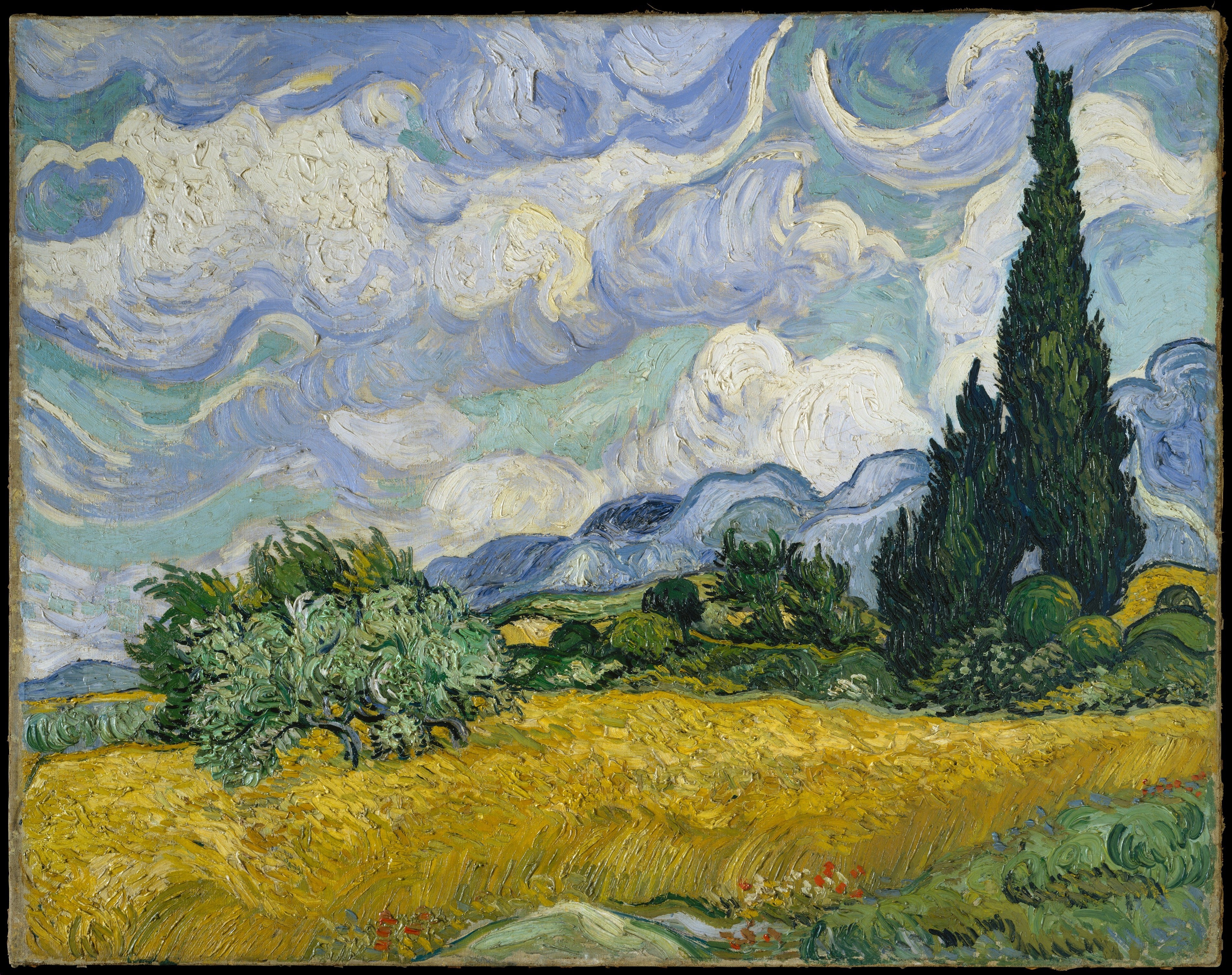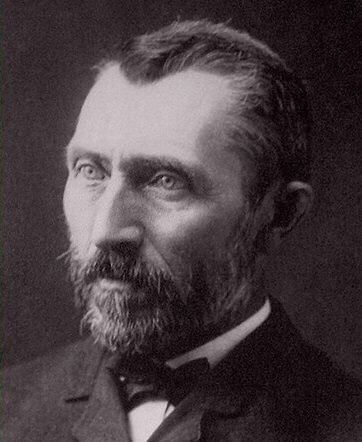
Wheat Field with Cypresses
By late June 1889, while living at the asylum in Saint-Rémy-de-Provence, Vincent van Gogh found himself increasingly captivated by the dramatic forms of the cypress trees that populated the Provençal landscape. Rising like dark green flames into the bright Mediterranean sky, these trees became a dominant motif in his work—symbols of vitality, mystery, and spiritual yearning. This painting, with its sweeping horizontal composition, stands as one of the finest realizations of that fascination.
Distinctive for its rich impasto and dynamic brushwork, the scene pulses with energy. Van Gogh didn’t merely depict the cypresses—he animated them. Their twisting, towering forms surge upward, cutting through swirling skies and fields that ripple with movement. Everything in the landscape seems to breathe and shift under his brush. Unlike his earlier, more restrained views of nature, this canvas embodies a bold, expressive style that gives equal weight to emotion and observation.
Van Gogh considered this painting one of his “best” summer landscapes, and its importance is reflected in the fact that he chose to document it in detailed reed-pen drawings, which he sent to his brother Theo in a letter dated July 2, 1889. The Met’s close-up vertical canvas of cypresses (49.30) was part of this same creative burst, painted en plein air with equal intensity and focus.
The artist’s high regard for the present work led him to revisit it in the studio that September, producing two additional versions: a full-scale painting now in the National Gallery, London, and a smaller replica, carefully crafted as a gift for his mother and sister (now in a private collection). These variations underscore how deeply Van Gogh valued the composition—not just as a technical or aesthetic success, but as an emotional statement and personal emblem.
In this painting, the cypress is not just a tree—it is a monumental force, rooted in the earth and reaching toward the heavens. Through his bold palette and turbulent brushstrokes, Van Gogh transforms the landscape into a vision of inner life—an expression of awe, longing, and the spiritual power he found in nature’s enduring forms.
Choose options


Wheat Field with Cypresses
About Artist

Vincent van Gogh
